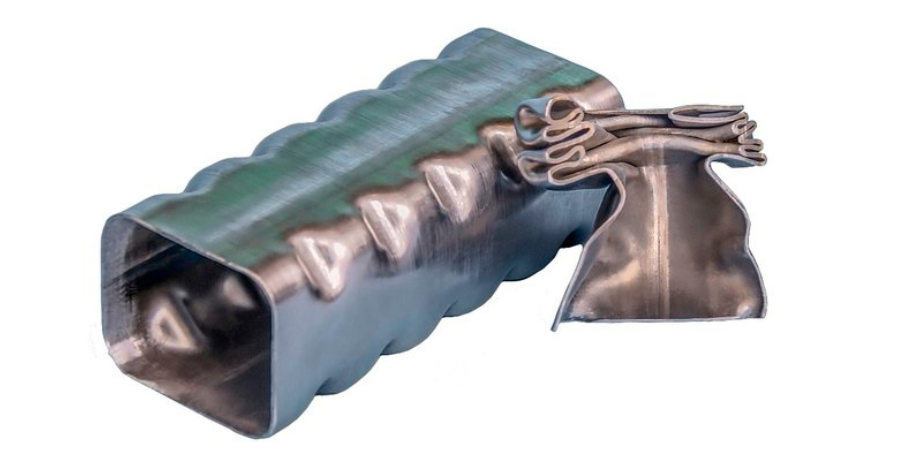In 2018, Heat Treat Today introduced one of its most popular features, the 40 Under 40 Awards for young, up-and-coming talent in the North American heat treat industry. Click here for the 2018 recipients. Heat Treat Today is posting occasional features of some of the 2018 recipients in anticipation of the 2019 40 Under 40 awardees to be presented in September (nominations are being accepted here). Today we feature Dr. Wei Guo of The Timken Company.
Wei Guo
The Timken Company
Principal Materials Engineer
Dr. Wei Guo was nominated from within The Timken Company. The following was provided by his colleague, Dr. Lee Rothleutner:
Dr. Wei Guo joined Timkin in 2018 and is on pace to have a prolific career in the area of heat treatment. Wei is continually leveraging both his industrial and academic heat treatment experience to implement new technologies at Timken while advancing the industry’s knowledge base. Wei has over 50 publications in the field of heat treatment and related fields, with his most recent contribution being available in the July/Aug issue of Thermal Processing magazine discussing residual stresses evolution.
When asked to describe what he finds interesting about metallurgy/thermal processing/heat treating, Wei Guo described the parallel between a metallurgist crafting a heat treat recipe and “a famous cook developing a recipe for new cuisine.”
“One needs to control the ingredients, mixing sequence, baking time and cooking temperature combined with skill and expertise to obtain an optimized flavor and palate. The development of heat-treating process recipes is similar, relying on the metallurgist’s fundamental knowledge and experience of physical metallurgy. The most exciting aspect of thermal processing is the application of the knowledge and experience to create a heat treat process that produces the desired result and creates value to the company.”
Wei recalls when he was a master student 10 years being a part of a team that developed a process in a lab for grain-oriented, electrical steels. That process has been formally deployed to four steel plants, promising the production of electrical steels with exceptional magnetic properties (high in magnetic induction and low in core loss). As a result, he found himself intrigued by metallurgy and heat treating.
Wei explains how heat treating fits into the processes at Timken:
“‘Stronger by design’ is the tag line of Timken and its bearing products. Heat treatment is critical to the production of quality, high performing bearings. Utilizing an improper heat treatment can result in a “garbage in- garbage out” effect; no matter how well the bearing design engineer optimizes the machining process and the mechanical design of bearing components, the production scrap rate and bearing performance may be negatively influenced. On the other hand, providing a proper heat treatment is the prerequisite to producing bearings with sufficient hardness and proper microstructure that meet the designer’s expectations. In my opinion, Timken is doing an excellent job expanding company knowledge and expertise with new heat treatment processes, beyond traditional through hardening and carburizing.”
With an eye to the future of the heat treating industry and what to expect out of new technology and advancements in metallurgy, Wei states:
“The heat treatment industry is trying to monitor residual stress and minimize the generation of undesirable residual stress during the manufacturing process that results in part distortion. However, distortion from these stresses and thermal gradients cannot be avoided. If the amount of distortion can be predicted by modeling and simulation, we can engineer a pre-heat treat shape that will result in the desired or expected post-heat treat shape. This concept has been referred to as “quench to fit”. Creating virtual heat treat processes based on data science and artificial intelligence can help select the best heat treatment method within a shorter amount of time. This might replace the current “one at a time” trial and error method currently employed and help the metallurgist obtain a high-throughput, high-quality heat treatment solution for the designated purpose.”
As the industry reels from the brain drain, it is noteworthy that many of our 40 Under 40 recipients agree with the bright future the industry promises for those entering the field in the next few years. Wei believes the industry is open to young professionals willing to learn.
“Because of the many process variables involved, everyone’s effort can make it better. To start with, [I recommend upcoming professionals] gain hands-on experience with practical heat treatment processes when trying to identify problems and challenges. I’d recommend that they determine an area of interest and drive themselves to learn/practice thermal processing skills. In addition, find a mentor; learning from a senior experienced metallurgist is always helpful. Many aspects of heat treatments cannot be learned from the textbook and might take a long time to figure them out on your own.”
“Heat treatment processing is a very dynamic world because many novel metallic materials are emerging every day,” Wei offers as a summary. “We, not only young professionals, but everyone in this field need to keep abreast of the latest materials development and make ourselves ready for the new challenges.”
Click here for the 2018 recipients. To nominate someone for the Class of 2019 40 Under 40, please click here.






